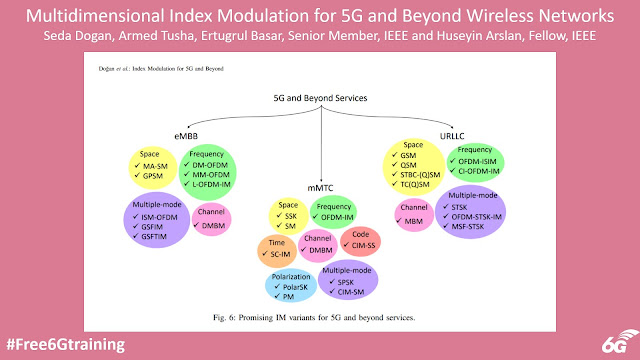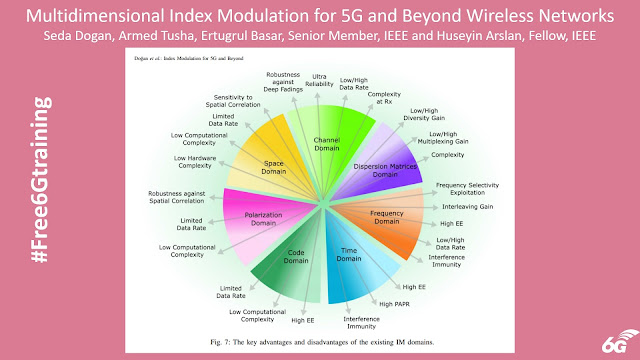To meet the multifaceted IMT-2020 requirements, 5G standards use a variety of techniques. While OFDM has been used for both the uplink and downlink, flexible numerology has been used to cater for different scenarios and use cases. In addition techniques like mini slot structures have been introduced to meet the low latency constraints.
When we move to B5G and 6G networks, the industry is looking at an order of magnitude of complexity in scenarios and use cases. The current approach may not work well. This is where the paper detailed below comes in to look at index modulation (IM) techniques that have drawn substantial attention from the researchers because of their inherently flexible structure and promising advantages in terms of spectral efficiency (SE), energy efficiency (EE), complexity and reliability.
Can #indexmodulation revive #wirelessnetworks? This study examines the flexible utilization of existing index modulation techniques to satisfy the challenging and diverse requirements of #5G and beyond services. https://t.co/dEgulvaqDb pic.twitter.com/NedJCrbwVq
— Proceedings of the IEEE (@ProceedingsIEEE) March 2, 2021
The paper appears in the Feb 2021 issue of IEEE Proceedings. The abstract says:
Index modulation (IM) provides a novel way for the transmission of additional data bits via the indices of the available transmit entities compared with classical communication schemes. This study examines the flexible utilization of existing IM techniques in a comprehensive manner to satisfy the challenging and diverse requirements of 5G and beyond services. After spatial modulation (SM), which transmits information bits through antenna indices, application of IM to orthogonal frequency-division multiplexing (OFDM) subcarriers has opened the door for the extension of IM into different dimensions, such as radio frequency (RF) mirrors, time slots, codes, and dispersion matrices. Recent studies have introduced the concept of multidimensional IM by various combinations of 1-D IM techniques to provide higher spectral efficiency (SE) and better bit error rate (BER) performance at the expense of higher transmitter (Tx) and receiver (Rx) complexity. Despite the ongoing research on the design of new IM techniques and their implementation challenges, proper use of the available IM techniques to address different requirements of 5G and beyond networks is an open research area in the literature. For this reason, we first provide the dimensional-based categorization of available IM domains and review the existing IM types regarding this categorization. Then, we develop a framework that investigates the efficient utilization of these techniques and establishes a link between the IM schemes and 5G services, namely, enhanced mobile broadband (eMBB), massive machine-type communications (mMTCs), and ultrareliable low-latency communication (URLLC). In addition, this work defines key performance indicators (KPIs) to quantify the advantages and disadvantages of IM techniques in time, frequency, space, and code dimensions. Finally, future recommendations are given regarding the design of flexible IM-based communication systems for 5G and beyond wireless networks.
The figure above nicely summarizes the key advantages and disadvantages of current IM domains. Although multidimensional IM types have been proposed in the paper for increasing the SE of IM systems, the paper does point out that a proper combination of one-dimensional IM types can serve different requirements simultaneously, as shown above.
You can get the PDF on ArXiv here.
Related Posts:
- Free 6G Training: DEDICAT 6G to Transform B5G Networks into a Smart Connectivity Platform
- Free 6G Training: European Vision for the 6G Network Ecosystem
- Free 6G Training: First Hexa-X Deliverable on '6G Vision, use cases and key societal values'
- Free 6G Training: Nokia to lead the EU’s 6G project Hexa-X



Comments
Post a Comment